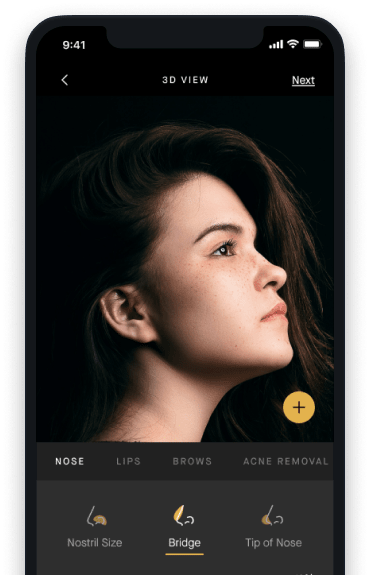 Abdominal Slimming Solutions
Abdominal Slimming SolutionsCan Fat Return After Liposuction? What You Need to Know
Despite the myth-busting plastic surgeons do day in and day out, one untruth that continues to make its way around the rumor mill is that liposuctioned-out fat can come back. Here’s what you need to know about maintaining your new contours after surgery.
Expert OpinionIs this article helpful?•9 min read
Medically Reviewed by
William Kennedy III, MD
William Kennedy III, MD
04.28.2025
Liposuction is the gold standard for eliminating stubborn pockets of fat once and for all. Despite the influx of non-invasive fat-reducing treatments that have come and gone over the years, plastic surgeons continually return to liposuction, a tried-and-true method for permanently removing fat to create a better-sculpted silhouette. Whether performed independently, as part of a fat-grafting procedure, or alongside complimentary procedures, like an abdominoplasty, nothing is as effective at contouring the body as liposuction.
Yet, despite the procedure's popularity, nearly every patient who opts for the surgery asks if the removed fat can return after liposuction. The answer: no. But it's not always that cut and dry since several variables influence the swelling of fat cells, ultimately leading to weight gain.
Curious ourselves, we took a deep dive into the world of liposuction—from how it works to whether fat can truly return. What we discovered might surprise you.
WHAT EXACTLY IS LIPOSUCTION?
Liposuction is a popular cosmetic surgery procedure used to remove excess fat from specific areas of the body, resulting in a more desirable body contour. This surgical procedure involves the use of a suction device to remove unwanted fat cells, which are then permanently gone. Liposuction procedures can be performed under general anesthesia, local anesthesia, or the tumescent technique, and are typically used to treat areas such as the abdomen, hips, thighs, and upper arms. It’s essential to note that liposuction is not a weight loss procedure, but rather a body contouring surgery designed to improve the shape and appearance of the body.
LIPOSUCTION OF THE ABDOMEN - BEFORE AND AFTER

TYPES OF LIPOSUCTION
There are several types of liposuction available, including traditional liposuction, ultrasound-assisted liposuction, laser-assisted liposuction, and power-assisted liposuction. Each liposuction technique has its unique benefits and advantages, and the choice of procedure will depend on the individual’s specific needs and goals. Tumescent liposuction is a popular method that involves the use of a local anesthetic to numb the area, while suction-assisted liposuction uses a vacuum-like device to remove excess fat. Liposuction surgeries can also be combined with other plastic surgery procedures, such as a tummy tuck, to achieve more comprehensive results.
LIPOSUCTION OF THE ABDOMEN - BEFORE AND AFTER

CAN FAT GROW BACK AFTER LIPOSUCTION?
Fat cells removed during liposuction can not grow back. We have a finite number of fat cells from the time we are born and we cannot grow new ones. Thus the fat cells that are removed during liposuction are gone forever. This fat removal process is effective in permanently eliminating unwanted fat deposits.
LIPOSUCTION OF THE ABDOMEN - BEFORE AND AFTER

Liposuction surgery sculpts areas where excess pockets of diet and exercise-resistant fat exist, such as the hips, abdomen, underside of the arms, and inner and outer thighs. Unfortunately, surgically removing fat doesn’t always mean the treated area will remain perfectly contoured, although the eliminated fat will not return.
WHERE DO THE FAT CELLS GO IF I GAIN WEIGHT AFTER LIPOSUCTION?
If you gain weight after liposuction, the fat cells in your body grow in size not in number. The culprit fat cells are mainly in areas of your body not treated by liposuction. As you gain weight, the fat cells in your body get larger. While you may have some fat cells remaining in the area treated by liposuction, and these may grow in size, the majority of fat cells growing in size will be elsewhere. Liposuction utilizes ultrasound energy to break down the walls of fat cells turning them into liquid, which is then suctioned out. Liposuction can effectively remove fat from specific areas, but it's important to maintain a stable weight post-surgery to preserve the results.
It's impossible to predict which areas of the body will be affected if you gain weight after liposuction. A few extra pounds shouldn't make much difference. AEDIT Founder and board-certified facial plastic and reconstructive surgeon Dr. William Kennedy, MD, says most liposuction patients begin to notice a difference when gaining five to 10 pounds or more. "The extent of visible change depends on where your body is genetically predisposed to store fat. Even modest weight gain can subtly affect contour in some people, especially in untreated areas."
When weight gain occurs after liposuction, body-sculpting treatments can help target areas riddled with noticeable fat, a plus since “nondetectable” plastic surgery is on the rise. A non-invasive option that Dr. Kennedy recommends is truSculpt, which uses radiofrequency energy to reduce fat and tighten skin. “It is particularly effective for touch-ups after weight gain or for those who want to refine areas that don’t respond to diet and exercise,” he says. “While it doesn’t replace liposuction, it can be a great complement for maintaining contour.”
HOW CAN I PREVENT FAT FROM COMING BACK AFTER A LIPOSUCTION PROCEDURE?
If you want to keep the weight off and enjoy your new physique for years, Dr. Kennedy says the best way to do so is by adopting a sustainable lifestyle that includes balanced nutrition, regular exercise, and stable weight management. “Consistency is key, and even though liposuction sets a new baseline, long-term success depends on a patient’s commitment to healthy habits.”
Good skin elasticity also plays a crucial role in maintaining the results post-procedure. Prioritize a balanced diet that consists of eating whole foods, avoiding processed foods, and following strict portion control.
Additionally, achieving and maintaining a normal weight can significantly enhance the effectiveness of liposuction. According to a post-liposuction survey published in the journal of Plastic and Reconstructive Surgery, patients who maintained a healthy diet were twice as likely to lose weight compared to those who didn’t—and those who exercised regularly saw even greater results.
WHAT IS THE BEST DIET AND EXERCISE TO MAINTAIN LIPOSUCTION RESULTS?
The best diet to maintain liposuction results is a balanced diet consisting of eating whole foods, fruits vegetables, lean proteins like chicken and fish, and whole grains. It is also encouraged to avoid processed foods and to follow strict portion control. Hydration is also important as water supports metabolism and is very effective at reducing appetite, hunger, and an overall desire to eat.
HOW SOON AFTER LIPOSUCTION CAN I START EXERCISING TO PREVENT WEIGHT GAIN?
If you're itching to return to your Pilates classes or the gym, taking the recommended time off is critical before working out again. You can usually resume light walking and basic physical activity a few days after surgery, which helps promote healthy blood flow and proper healing.
Recovery after liposuction can take up to four to six weeks, during which time it is recommended to wear a compression garment to minimize swelling and aid in skin contraction. Additionally, minimizing blood loss during the procedure is crucial for efficient fat removal and optimal recovery. After 6 weeks, patients are allowed to resume normal activities and strength training. The slow ramp-up in activity consists of the following: During the immediate post-op period of Days 1-3 post-surgery light walking is encouraged to promote circulation and reduce the risk of blood clots.
During the first two weeks, you may gradually increase the duration of your walking. But still no cardio, strength training, or bending during the time. By weeks 2-4, you can begin light cardio consisting of stationary bikes and elliptical at low intensity. By weeks 4-6, you may begin light resistance training at less than 60% effort. After 6 weeks you may resume normal physical activity, heavy lifting, and strength training.
WILL FAT REDISTRIBUTE UNEVENLY AFTER LIPOSUCTION?
Determining how and where the body will redistribute fat is hard to peg, but Dr. Kennedys says it can sometimes appear uneven when gaining significant weight post-surgery. Weight gain after liposuction will usually lead to the appearance of fat accumulation in areas not treated by liposuction. "The treated areas now have fewer fat cells and won't expand like they used to, while untreated areas still can,” he explains. “This may lead to an appearance of disproportion or asymmetry when gaining a considerable amount of weight." No such migration or redistribution of fat occurs but is instead the lack of fat cells in the liposuction-treated areas. It is important to note that liposuction is not a solution for loose skin. Patients with loose skin or those who have experienced significant weight loss may require additional body contouring procedures to improve skin elasticity and achieve optimal results.
CAN HORMONAL CHANGES CAUSE FAT TO RETURN AFTER LIPOSUCTION?
Hormonal changes can do a number on the body whether you had liposuction or not. Changes to estrogen, insulin, cortisol, leptin, and ghrelin can all influence fat distribution.
So, what happens when hormone levels rise or dip after liposuction? More fat may be visible throughout the body, especially in the stomach, flanks, thighs, and arms, where fat distribution due to hormonal shifts is most prominent. Still, the removed fat cells won’t return to the treated areas. The drop in estrogen levels during menopause can trigger fat redistribution throughout the body, often leading to noticeable changes in shape and contour. Cortisol—a hormone released in response to stress—has been linked to increased abdominal fat storage, highlighting the role of stress management in preserving liposuction results over time.
IS IT HARDER TO GAIN WEIGHT IN AREAS TO HAVE LIPOSUCTION?
As we've covered, liposuction permanently removes fat cells from treated areas, which is why those regions are typically less susceptible to future weight gain—contributing to the procedure’s reputation for lasting body contouring results.
HOW LONG DO LIPOSUCTION RESULTS LAST
The results after a liposuction are permanent. Once fat cells are removed during liposuction they do not spontaneously regrow. However if fat cells are left behind after a liposuction procedure, these cells can grow in size, but not in number. But it is unlikely that the overall appearance in the liposuction area will ever return to its pre-liposuction look.
LIPOSUCTION OF THE ABDOMEN - BEFORE AND AFTER

RECOVERY FROM LIPOSUCTION
After a liposuction procedure, patients can expect some swelling, bruising, and discomfort, which can be managed with compression garments and pain medication. The recovery period typically lasts several weeks, during which time patients should avoid strenuous activities and follow a healthy diet and exercise regimen to maintain their new body contour. The results of liposuction can be long-lasting, but it’s essential to maintain a stable weight and healthy lifestyle to prevent weight gain and excess fat from returning. Liposuction costs can vary depending on the individual’s needs and the complexity of the procedure.
LIPOSUCTION OF THE ABDOMEN - BEFORE AND AFTER

LONG-TERM EFFECTS
The long-term effects of liposuction can be significant, with many patients experiencing notable improvement in their body contour and overall appearance. However, it’s essential to note that liposuction is not a guarantee against weight gain or excess fat returning, and patients must maintain a healthy weight and lifestyle to achieve optimal results.
Additionally, liposuction can have some potential risks and complications, such as blood clots, infection, and lidocaine toxicity, which can be minimized by choosing a qualified plastic surgeon and following proper post-operative care. Overall, liposuction can be a highly effective and safe procedure for removing unwanted fat and achieving a more desirable body contour, but it’s crucial to approach the procedure with realistic expectations and a commitment to maintaining a healthy lifestyle.
Photo examples of patients having undergone liposuction provided by Dr. Samuel Lin of Boston Plastic Surgery and Dr. Daniel Gould of Plastic Surgery Beverly Hills.
tagsFat Reduction
More Related Articles
Related Procedures

AI Plastic Surgeon™
powered by'Try on' aesthetic procedures and instantly visualize possible results with The AI Plastic Surgeon, our patented 3D aesthetic simulator.

